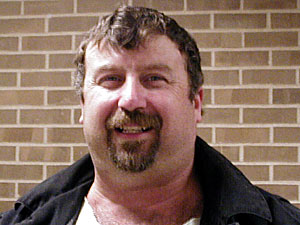|
Photos
More from MPR
Your Voice
|
Changes for job hunters are dramatic and grim, survey says
January 30, 2003
 |
| Martin Mingo got one call back after sending out 35 resumes and job applications when he was laid off as a truck driver in August. (MPR Photo/Bill Catlin) |
St. Paul, Minn. — At the end of 2000, as the long economic boom was nearing an end, there were 140,000 job openings in Minnesota. Two years later, the Minnesota Department of Economic Security found a little more than 55,000. For job hunters the changes are dramatic and grim.
"During 4th quarter of 2000, we had 16 job openings for every 10 unemployed worker. In 2002, the table turned, and now we have five job openings for every 10 unemployed," according to Jay Mousa is research director for the DES.
 | |||
Even the health care sector, which still has more than 12,000 job vacancies saw a decline of nearly one third from the end of 2001 to the end of last year. The hard-hit manufacturing sector saw job openings decline by nearly half.
Mousa says few occupations showed any growth in job opportunities. "One of them is protective services, and the other is bill collectors, and it's a sign of the time. These two industries were not expanding in the past, and now suddenly with the recession we have seen a significant increase. Almost all other occupations are declining," Mousa says.
Mousa says lower turnover is one of the reasons there are fewer job openings. As job security becomes a bigger concern, people are less likely to risk leaving their current job, resulting in fewer openings.
Mousa says the Northeastern region of the state was the only area to post an increase in job openings. He says vacancies increased by a third, but the news is somewhat mixed.
"The job openings in Northeast and Duluth area are not coming from the high-paying industries, and so you're seeing a significant increase in job openings in retail and they tend to pay lower than the average," he says.
The numbers reflect the reality for students hitting the job market after completing course work at St. Paul College, whose curriculum includes liberal arts as well as trades.
"Normally our placement statistics from this school run 85 to 90 percent at least for all of our programs. And although there are some programs that are still very good for placement, there are many that had a very tough time this past year. Those classes, placement rates are probably running closer to the 60-65 percent mark. So that's, as far as I'm concerned, down an awful lot -- a significant number from two years ago," says Student Placement Coordinator Curt Groth.
|
Although there are some programs that are still very good for placement, there are many that had a very tough time this past year.
- Coordinator Curt Groth, placement coordinator |
Groth says the health occupations have nearly 100 percent placement rates, as does the sign language interpreters program. He says information technology areas such as computer network engineering, and database management have been hit the hardest, where the number of job openings he sees has dropped by about half.
Welding student Martin Mingo decided to head back to school after sending out 35 resumes and job applications and getting one response. He was a truck driver for Honeywell's Advanced Circuits business but lost his job in August.
"They laid off about 1,000 people, everybody out of work, and then the economy took a dive and now what do you do? Where are you going to find a job that pays $15 to $18 an hour to start with? It sucks, but you know, what can you do?" Mingo says.
Actually, Mingo has a plan. He's starting a business to make and sell what he calls the slide-away boat trailer, which he says can load a boat in under 10 seconds.
"We know how to build them, we just need to know how to weld better. So, I figured, the dislocated workers program is paying {for me} to go to school, so I thought what the hell, get a welding certificate, and so I can get the business going," he says.
If the business sputters, Mingo's prospects as a welder don't appear to be improving, according to the job survey. The 119 openings the survey found represent a 63 percent decline from a year ago, though state officials caution those numbers may be somewhat unreliable because because they're so small.
|
News Headlines
|
Related Subjects
|
